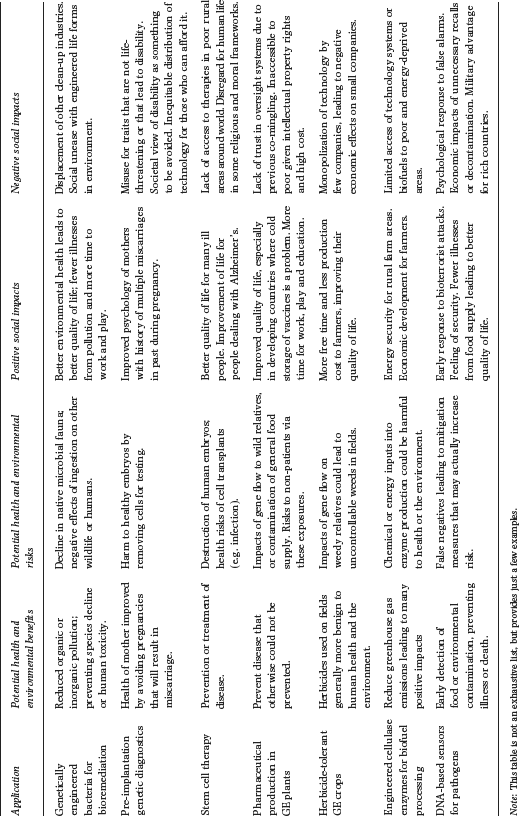Case Studies for Biotechnology
Biotechnology can be channeled to address challenges in energy, medicine, security, food and agriculture, environmental sustainability, and industrial products (Table 94.2). For example, fossil fuels are a finite energy resource, and we are expending them more quickly than nature can replenish. Researchers are using biotechnology to engineer better cellulases – enzymes that can break down plant material into biofuels such as ethanol. Better cellulases could eventually lead to the more cost-effective production of sustainable fuels.16 Other examples of the environmental applications of biotechnology include micro-organisms engineered to produce hydrogen gas from organic waste; plants engineered to make biodegradable polymers; molecular machines based on plant photosynthetic proteins to harness energy from the sun; bacteria engineered to break down environmental pollutants; and biosensors developed to detect harmful environmental contaminants rapidly. The environmental applications of biotechnology are often overlooked and underfunded, yet the sustainability of our planet in the face of an increasing population is an issue of utmost importance.

Biotechnology has taken off in areas of food and agriculture. For example, cotton, soybeans, maize and other crops have been engineered to contain proteins from the bacterium Bacillus thuringiensis ...
Get A Companion to the Philosophy of Technology now with the O’Reilly learning platform.
O’Reilly members experience books, live events, courses curated by job role, and more from O’Reilly and nearly 200 top publishers.

